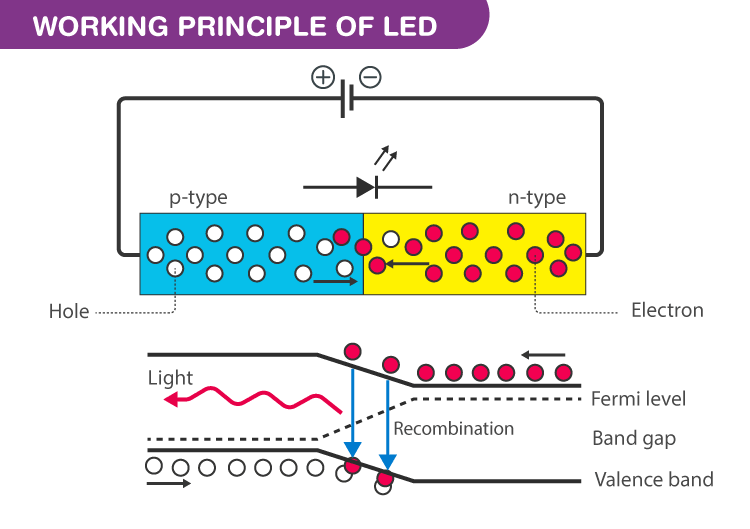How light emitting diodes (LED) work? What are the differences between LED lights and regular lights?
The light emitting diodes (LED) is a semiconductor electronic component that can convert electrical energy into light energy. Its working principle is based on the properties of semiconductor materials, especially the properties of the p-n junction (the interface between p-type semiconductors and n-type semiconductors).
Working principle of light emitting diodes (LED):
- Carrier injection: When a forward voltage is applied across the p-n junction of an LED, holes (positive charge carriers) in the p region and electrons (negative charge carriers) in the n region are pushed toward the p-n junction by the electric field force.
- Recombination luminescence: Near the p-n junction, electrons and holes meet and recombine. This recombination process releases energy, which is emitted in the form of photons, that is, light.
- Color of light: The color of light emitted by an LED depends on the band structure of the semiconductor material. By changing the type of semiconductor material and the doping elements, the LED can be controlled to emit different colors of light, such as red, green, blue, etc. Modern technology can also produce almost any color of light by combining different colors of LEDs (such as RGB LEDs).
The difference between LED lamps and ordinary lamps:
- Luminescence principle: LED lamps emit light based on the electron-hole recombination of semiconductor materials, while traditional incandescent lamps emit light by heating the filament to an incandescent state through electric current, and fluorescent lamps use low-pressure mercury vapor to release ultraviolet light after power is turned on to stimulate phosphors to emit light.
- Energy efficiency: LED lamps have extremely high energy efficiency and can usually convert most of the electrical energy into light energy, while incandescent lamps and fluorescent lamps have relatively low energy efficiency and most of the electrical energy is converted into heat energy.
- Lifespan: The lifespan of LED lamps is much longer than that of traditional lamps, generally up to tens of thousands of hours, while the lifespan of incandescent lamps and fluorescent lamps is relatively short.
- Environmental protection: LED lamps do not contain harmful substances (such as mercury), and due to their high energy efficiency, they reduce energy consumption and carbon emissions, making them more environmentally friendly.
- Controllability: LED lamps are easy to control and can achieve functions such as fast switching, brightness adjustment and color change, while traditional lamps are relatively difficult to achieve these functions.
In summary, there are significant differences between LED lamps and ordinary lamps in terms of luminescence principle, energy efficiency, lifespan, environmental protection and controllability. With the continuous advancement of technology and the reduction of costs, LED lights are becoming more and more widely used in the field of lighting.














